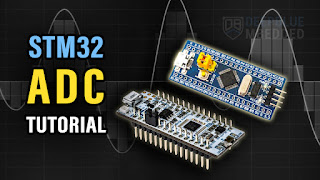How many types of Arduino do we have?
Arduino is a popular open-source electronics platform based on easy-to-use hardware and software. Over the years, many types of Arduino boards have been developed to cater to different needs, such as size, processing power, connectivity, and specific applications. Below is a list of the most common types of Arduino boards:
1. Classic Arduino Boards
These are the most widely used Arduino boards, suitable for general-purpose projects.
Arduino Uno: The most popular board, great for beginners.
Arduino Mega 2560: Offers more pins and memory for larger projects.
Arduino Nano: Compact version of the Uno, ideal for small projects.
Arduino Leonardo: Features a built-in USB controller, allowing it to emulate keyboards/mice.
2. Advanced Arduino Boards
These boards are designed for more complex projects requiring higher performance.
Arduino Due: Based on a 32-bit ARM Cortex-M3 microcontroller.
Arduino Zero: A 32-bit board with advanced debugging capabilities.
Arduino MKR Series: Compact boards with built-in connectivity options (Wi-Fi, GSM, NB-IoT, etc.).
3. Specialized Arduino Boards
These boards are tailored for specific applications or environments.
Arduino Micro: Small board with built-in USB, ideal for wearable projects.
Arduino LilyPad: Designed for e-textiles and wearable electronics.
Arduino Esplora: A pre-assembled board with built-in sensors and inputs, great for quick prototyping.
Arduino Robot: A fully assembled robot with wheels, sensors, and an LCD screen.
4. IoT and Connectivity-Focused Boards
These boards are optimized for Internet of Things (IoT) projects and wireless communication.
Arduino MKR WiFi 1010: Features Wi-Fi and Bluetooth connectivity.
Arduino MKR GSM 1400: Supports GSM/3G connectivity.
Arduino MKR NB 1500: Designed for NB-IoT and LTE networks.
Arduino Nano 33 IoT: Combines Wi-Fi, Bluetooth, and a 32-bit microcontroller.
5. Education and Learning Boards
These boards are designed for educational purposes and beginners.
Arduino Uno WiFi Rev2: Adds Wi-Fi capability to the classic Uno.
Arduino Nano Every: A cost-effective and compact version of the Nano.
Arduino Education Starter Kit: Comes with components and tutorials for learning.
6. Industrial and High-Performance Boards
These boards are built for industrial applications and high-performance tasks.
Arduino Portenta H7: A high-performance board for industrial IoT and AI applications.
Arduino Opta: Designed for industrial automation and control.
7. Arduino-Compatible Boards
These are third-party boards that are compatible with the Arduino ecosystem.
Adafruit Feather: A family of compact, Arduino-compatible boards.
SparkFun RedBoard: A beginner-friendly Arduino-compatible board.
Teensy: A powerful and compact Arduino-compatible board.
Summary
There are dozens of Arduino boards, each designed for specific use cases. The most common types include:
Classic boards (e.g., Uno, Mega, Nano).
Advanced boards (e.g., Due, Zero).
Specialized boards (e.g., LilyPad, Robot).
IoT-focused boards (e.g., MKR series, Nano 33 IoT).
Educational boards (e.g., Uno WiFi Rev2, Education Starter Kit).
Industrial boards (e.g., Portenta H7, Opta).
If you're just starting out, the Arduino Uno is highly recommended. For more advanced projects, you can explore the MKR series or Portenta H7.




评论
发表评论